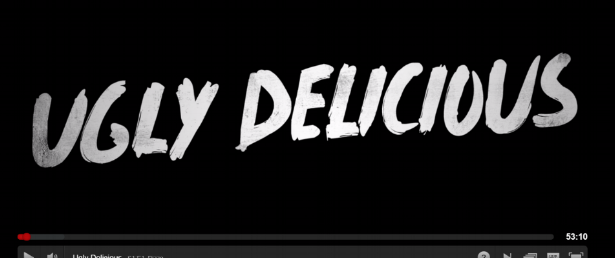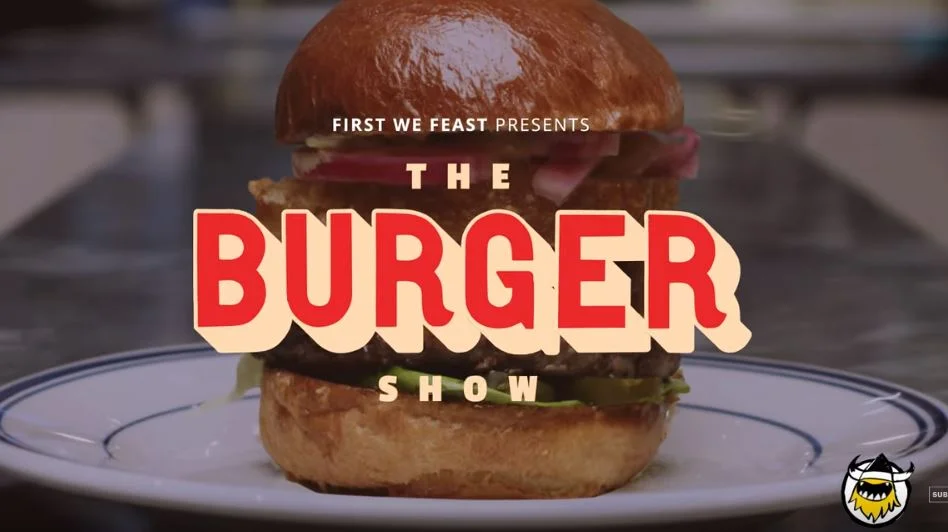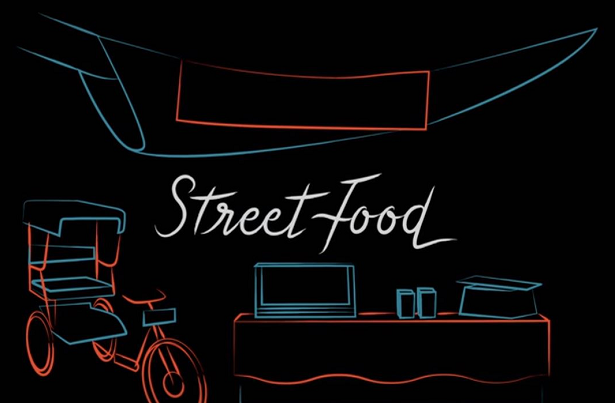Catastrophic Reviews: Food On The Go

Why hello there, and welcome back to Kitchen Catastrophe’s ongoing series: Catastrophic Reviews! It’s been a couple months since we posted one of these, because it turns out spending several months running all around two entire states doesn’t leave one with much time to sit down and watch food shows or documentaries. Though, technically, this Is also the series we use to review like, cookbooks, so I guess it’s just specifically any food media. Anyway, today’s topic is an interesting little show I watched recently on Netflix, and…it’s rather hard to talk about it without giving away the main argument. So let’s just have the argument, this is Food on The Go.
A Rich and Oily Spread.
At its fundamental level, the documentary is about Italian Diaspora, and Italian culture by way of Italian food. If you’re unfamiliar with the term (and given that I think I heard it in an RPG before I heard it in college, that’s not very uncommon), the term ‘diaspora’ refers to when a group of people are forced to leave their homeland, and to the group in question. In short, it’s a fancy Bible word for “refugees” (though typically in a more organized manner) The Italian Disapora refers to several waves of Italians emigrating from Italy, mostly due to economic necessities: when Italy became a country in 1890, many farmers ended up without land, or without enough land to live on as properties were redivided with the end of feudalism in Southern Italy.
Feudalism, ended in Italy in 1890, banned in Shanghai parks in 2002.
Then, following World War 2, millions of Italians found that it was really hard to have wealthy lives when, you know, a bombing run had turned their farm into scorched earth, or Allied ships had scuttled their fishing boats.
Thus, millions of Italians moved to the New World, especially to the ports of Buenos Aires, Argentina, and New York City, The United States. The 1950’s newsreel that explains the latter half of this to us at the beginning of the film ends with the surprisingly welcoming and supportive “They’re home now.” In reference to the newly immigrated Italians.
And if you think it was a little jarring of me to suddenly step into relaying what happened in the film from what you thought was an academic discussion about history, head’s up, because that is like, 36% of this film. I counted, and in the 65 minute or so run time, there are no less than 32 different speakers introduced via subtitled names, places of work/job, and tenure in that position. EIGHT of them are rapid-fire dropped on you without introduction in quick clips in the first five minutes, before we step back, and really look at what’s going on.
These are the first people you see talking in the film, and they don’t get a fancy introduction. Where is the respect for the humble sausage-sizzler?
The documentary takes a slightly unusual approach to presenting the myriad facets of its argument, tending to do on, in essence, 3-5 minute vignettes, where one aspect, one idea, is visited or realized, and then we snap to someone arguing against the idea, or with a related idea, or maybe we’ve just changed subjects now, it can be hard to tell. I found the first several minutes a little disconcerting the first time, and appreciated the piece much more on my second watching, since I at least partly remembered the components.
Now, as I mentioned, it’s going to be a little difficult to explain my feelings without giving away much of the narrative, such as it is, in the piece, so let me give you this option here: I personally recommend checking out the film if you have an interest in Italian food, or you think the discussion of “food as culture” is interesting. There’s a lot of nice lines and details in the work that I think really make it a great piece, and it’s barely over an hour long. Give it glance. For those willing for a more in-depth, slightly spoiler-y discussion, let’s forge on.
Some Slightly Spoiled Mozzarella
The documentary truly starts, after some somewhat jumbled presentation of viewpoints, and some nice moments interacting with Italians in their kitchens and workplaces, with what I call a “foundation cracker” comment: a revelation that’s meant to shake up your understanding of the topic, and get you to reconsider what you know. The revelation they go with is the revelation that I have dropped multiple times in this blog: Italians don’t eat spaghetti and meatballs.
The noodles are a lie.
Italian AMERICANS do, but they don’t in Italy. Why? Because meat was a lot cheaper in America than in Italy, so it got added to a bunch of dishes so the immigrants could feel like their lives were really improving after the move. Italy has meatballs, and it has Spaghetti, but it didn’t MIX the two. There’s an honestly fun (if understated) discussion at certain points about how Italian immigrants went a little TOO hard on the meat, and now we’re trying to dial it back.
We then jump to Buenos Aires, where a festival is being held to support “Italianity”, as June is apparently a big month for acknowledging the role of Italians in Argentina’s history. And as someone who has never STUDIED Argentine history beyond a couple clips from “Evita” I was surprised to learn how foundational they were. Like, ‘The son of Italian immigrants designed their FLAG’ important.
There’s a joke that could be made here about the effort such an act would take, but it’s beneath me.
Like apparently more than 2 colors were beneath Belgrano.
We then cut to Leonardo Fumarola, a chef in Buenos Aires who is…well, spoilers, the documentary kind of implies he’s on the “bad” team. Specifically, Leonardo is, in his first appearance, rather snooty about the idea of Argentine innovations on Italian dishes, with kind of classic uptight lines like “We don’t need to invent anything, because the dishes have already been invented.” And “You go to a restaurant and you see all these spelling errors-wait, no, “horrors”, not errors, eh? And you know this is not really Italian food.”
Which, and I say this as a comedian, that’s a pretty sick burn. Credit where it’s due, it’s a solid line, especially since ‘errors’ and ‘horrors’ rhyme a little better in Spanish.
There’s a couple segments talking about how Argentinean barbecue is because Italian immigrants brought their designs for Grills with them, rather than the indigenous methods, and how Italian immigrant entrepreneurs drove LaGuardia to make markets for them to sell their vegetables at in New York, before jumping to its next hot-button issue: Pizza.
Here they introduce their second ‘villain’, such as anyone is a villain in this: Antonio Pace, founder and president of the AVPN, an organization whose acronym makes sense in Italian, but I didn’t write down, so they’re gonna be the “True Neapolitan Pizza Association”, since that’s what it translates to.
It doesn’t help that I think about something very different when I read AVP.
The association has a somewhat noble goal: to ensure that the traditions involved in the creation of Neapolitan-style pizza, the city in which modern pizza was invented, are not forgotten or lost. The problem I have with them is they’re such fucking DICKS about it. “There are only two great pizza traditions, Neapolitan-style pizza, and imitators of Neapolitan pizza,” Antonio pronounces, ignoring that people were making pizza for centuries before a Neapolitan pizzaolo made pizza Margherita for the Queen. Of course, THAT guy doesn’t get the credit either, oh no, Antonio likes to say “Neapolitan pizza has not fathers, no patrons. It is the fruits of Neapolitan people coming together.” That’s nice. Way to fuck over the guy who actually tied your narrative together, Antonio.
And if it sounds like I’m being a little aggressive here, it’s because of three points: firstly, this argument is basically the core of the rest of the film: what makes Italian food truly Italian, and who gets to make it? Secondly, this is not the first time I’ve had to hang out with this guy. He showed up in Ugly Delicious, and I think one other cooking show, but I’m not certain. So I’ve had this beef for a while. And lastly, because, (and spoilers, this is partly an argument made by another chef later in the film) he’s kind of being an idiot about it. Antonio rattles off the correct, necessary ingredients for a Neapolitan pizza, with NO evidence that he’s aware of the fact that almost none of the ingredients are actually FROM Italy, originally. You need San Marzano tomatoes (tomatoes come from America), Buffalo Mozzarella (water buffalo weren’t introduced to Italy until around 1000), and Basil (Basil originated in tropical regions, including Central Africa and Southeast Asia).
Things Take a Dark Turn
For contrast, and before my blood pressure can get to dangerous levels, we snap across the globe back to Buenos Aires, where a pair of pizzerias that have been running for decades makes Antonio’s point simultaneously silly, and a little more understandable. “There is no better pizza than Buenos Aires pizza,” the waiter at one announces, before rattling off a list of pizzas that are… well, listen to these:
“The House Special” – Mozzerella, ham, tomato slices, garlic, parsley, hard-boiled eggs, and peppers.
okay, mostly normal, with a couple odd choices.
“Bacon and Fried Egg” pizza
Alright, I’ve seen those, that’s pretty-
Holy shit, is there pizza under those eggs?
Okay, I haven’t seen them like THAT, that’s weir-
Wait, did you say "“Cherry and Orange” pizza? What? Like, the fruits? Nothing else? You didn’t list a cheese, is there a cheese? (Do I WANT a cheese?)
at this point, the OTHER pizzeria chimes in with its…bold take on pizza toppings:
“Tutti Quanti” – Ham, BLUE CHEESE, tomato Slices, garlic and parsley, peppers, hearts of palm, whole green olives, and FRY SAUCE.
“Tutti Quanti” means “All of it.” Not just “everything”, but “ (Every) (things)” It’s very accurately named.
It’s after this parade of horrors (one kind of weird bit: they bring up how, in order to prep for rush hour, they pre-stretch their dough, sauce it, and top it with torn cheese, and then just stack up the partial pizzas under the tables to quickly complete assembly for the evening orders.) that we really lean into the theme, as one commenter remarks “Sometimes, food becomes political. Because it is a form of identity, and national identity. And some, here in Italy, are using food to differentiate themselves from the immigrants.”
There’s another couple points made by people, one of whom is focused more on the economic side of the Italian superiority: that these false Italian products hurt the good name of REAL Italian products, by giving people shoddy products. There is a bit of ragging on American Parmesan cheese, which…sure. That’s fair. Comparing Kraft Parmesan and Parmigiano Reggiano, it’s pretty easy to go “I mean, yeah, this one’s BETTER, but THIS one is cheaper”, so it’s not like I can’t agree that it’s probably costing Italy some export money.
I’m not throwing stones here. I have both the real deal AND the swill in my fridge. Because some meals aren’t worth shaving $20 a pound cheese into.
And the rest of the piece is really focused on this ongoing idea: can these things made in New York and Buenos Aires be called “Italian food”? different people come at it different ways. Chefs, historians, they respond differently. One brings up the fact that there’s really not an actual “Italian food”: Italy has 19 different recognized culinary regions. ITALY doesn’t cook like Italy!
We spend a bit of time with one of my favorite characters to pop up in a couple of these shows, Fabio Picchi, a chef who runs a buffet/theatre in Florence, who bellows out orders and jokes. He’s fun to watch in I’ll Have What Phil’s Having, and he’s fun here. (“DON’T JUST LINE UP AT THE BUFFET, GO AROUND. IF YOU WANT TO STAND IN LINES, DO IT IN ZURICH, NOT HERE!”)
Fabio’s just a great guy to watch. This is him praising the bread at a local market. In 20 seconds, he’s going to be absolutely enamored at a local barista’s name.
There’s one final section of the show, and while you might think I’ve been pretty exhaustive, understand these are just the points that stood out to me. There are commentators I haven’t cited ONCE in this piece, who talk for multiple minutes, there are musical numbers, quick talks about sexism and festivals, all of which I didn’t have SPACE to talk about.
But the last section starts at an Italian dairy farm, with its staff. Of Sikhs. Sikhs, for people who didn’t study philosophy in college, are a smaller religious sect from northern India. They’re the ones who wear turbans all the time. (They aren’t supposed to cut their hair, so they use turbans to keep it up and secure.) And it’s noted by the farm owner that he can’t get Italian labor. And even if he could, he doesn’t think they’d do the same job. Who better to tend cattle than people who find them holy? The Sikhs themselves note that they don’t feel wholly Italian, but nor are they wholly Indian. This triggers a series of examples, at the various restaurants and companies we’ve already been through: pizza chefs in New York who are Mexican immigrants. Dominicans who clean Octopi in little Italy. Romanians tending Italian vineyards, a chef we’ve been talking to in Italy for part of the show reveals he’s an immigrant, and his name is Mustafa.
The show closes with a note: During the Disapora, 27 million Italians moved out of Italy to the Americas. The American population of Italians is now 60 million. While the population of ITALY is 59 million. The fact is presented without comment, overlaid over a performance from a festival back in the opening of the film, with Argentinean Italians recreating their ancestor’s departure from Italy.
Though I see they didn’t use period-appropriate levels of dirt.
Italian Americans (North and South) outnumber native Italians now. Someday, their culinary traditions may be more popular than the traditional ways. And what will that mean? These are the questions the film is about, and it gives you a wide range of views on the subject. It’s clear enough which way the film leans, but it doesn’t demand you agree with it. As I said before, I liked it. I recommend it, and I stand by that. Just for some of the great lines and little nuggets of commentary, if nothing else.
Hell, The United States has like, 8 distinct pizza traditions itself. And I don’t know about you, but I could use a slice right now. All this talk of Italian food has made me hungry.
If you want to support Jon so he can afford even more pizza, consider supporting the site on Patreon. For as little as $1 a month, you can help the site work toward better equipment, better ingredients, and actually paying Jon one of these days. If you like our content, but not enough to spend some hard-earned cash on it (and we understand. Jon himself has little in the way of liquid funds) then we always suggest you just share our social media posts! The more people who see our Facebook, Twitter, and Instagram, the more people can learn about the “horrors” of Argentinean pizza.
MONDAY: JON, HAVING STUFFED HIMSELF WITH PIZZA, NEEDS TO GET A LITTLE HEALTHIER, WITH A BOWL OF MISO SOUP.
THURSDAY: JON, HAVING JUST SHAMED HIMSELF IN HIS MISO SOUP POST, REFLECTS ON JAPANESE CULINARY PHILOSOPHY.















